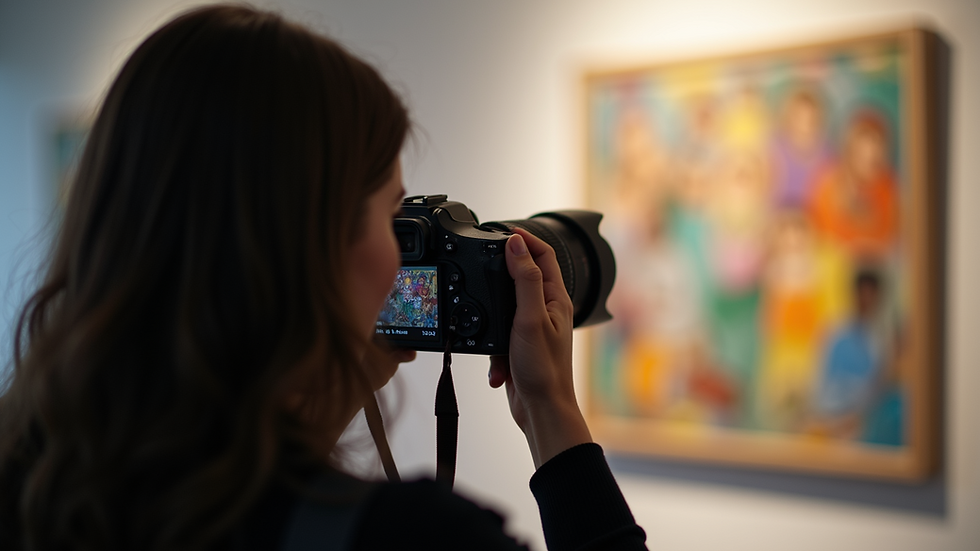Capture Memorable Moments with Event Photography
- vladkud93
- 14 hours ago
- 4 min read
When you’re in the thick of an event, whether it’s an art opening, a gallery launch, or a creative workshop, the last thing you want to worry about is missing those fleeting moments that make it special. That’s where event photography comes in. It’s not just about snapping pictures; it’s about capturing the vibe, the energy, and the story unfolding right in front of you. Together, we can make sure those memories don’t just live in your head but become tangible, shareable pieces of your creative journey.
Event Photography Tips That Actually Work
Let’s cut to the chase. Event photography isn’t about fancy gear or complicated setups. It’s about being present and knowing what to look for. Here are some tips I’ve picked up along the way that you’ll find useful:
Scout the venue beforehand. Knowing the lighting, layout, and key spots helps you anticipate moments instead of chasing them.
Use natural light when possible. It keeps things authentic and less staged. If you need extra light, bounce it off walls or ceilings to avoid harsh shadows.
Focus on candid moments. The best shots are often unplanned - a shared laugh, a thoughtful glance, or a spontaneous gesture.
Keep your camera ready but stay unobtrusive. People relax when they forget the camera is there, and that’s when magic happens.
Shoot in bursts during key moments. Events move fast. A quick series of shots increases your chances of nailing the perfect expression or angle.
These aren’t just tips; they’re little hacks that help us artists and creatives get the shots that tell a story without interrupting the flow.

What is the 20 60 20 Rule in Photography?
You might have heard about the 20 60 20 rule in photography. It’s a simple but powerful guideline that helps balance your composition and storytelling in event shots.
20% of your frame should be the subject. This is the main focus, like an artist unveiling their work or a collector examining a piece.
60% is the environment. This includes the gallery space, the crowd, the lighting - all the context that gives your subject meaning.
20% is negative space. This breathing room prevents your photo from feeling cluttered and draws attention to the subject.
Applying this rule helps you create images that feel balanced and intentional, not just snapshots. It’s especially handy when you’re juggling the chaos of an event and want to keep your shots clean and compelling.
Why Event Photography Services Matter for Creatives
We all know how much effort goes into putting together an event. The lighting, the setup, the guest list - it’s a lot. But the real value lies in how those moments get preserved. That’s why partnering with reliable event photography services can be a game-changer.
Here’s what you get when you work with pros who get the creative hustle:
Consistent quality. You don’t have to worry about blurry shots or missed moments.
Professional editing. The images come polished but still true to the event’s vibe.
Time saved. You focus on your art and guests while the photographers handle the documentation.
Versatile content. From social media teasers to portfolio additions, you get images that serve multiple purposes.
It’s not just about hiring someone with a camera. It’s about finding a partner who understands your vision and helps you tell your story through images.

How to Prepare for Your Event Photography Session
Preparation is where a lot of the magic happens. It’s not just about showing up with a camera; it’s about setting the stage for great photos. Here’s how you can get ready:
Communicate your vision clearly. Share what moments matter most to you - the artist’s speech, the crowd’s reaction, the details of the artwork.
Create a shot list. Even a rough list helps keep things on track and ensures nothing important gets missed.
Think about timing. Some moments are fleeting, like the unveiling or a toast. Make sure your photographer knows when these will happen.
Consider the flow. If your event has multiple parts, plan how the photographer will move through the space without disrupting guests.
Discuss post-event needs. Will you want digital files, prints, or a highlight reel? Setting expectations early saves headaches later.
This kind of prep turns a good shoot into a great one. It’s the difference between random snaps and a cohesive visual story.
Making Your Event Photos Work for You
Once you have those photos, what’s next? The real value comes from how you use them. Here are some ideas to get the most out of your event photography:
Share on social media with thoughtful captions. Let your audience in on the story behind the shots.
Update your portfolio or website. Fresh images show you’re active and engaged in the creative community.
Create printed materials. Invitations, postcards, or gallery catalogs benefit from professional photos.
Document your growth. Over time, these images become a visual diary of your creative journey.
Collaborate with other creatives. Use photos to promote joint projects or exhibitions.
Photos aren’t just memories; they’re tools that help you connect, promote, and grow your creative presence.
Let’s Capture Your Next Event Together
I get it - finding the right way to document your creative events can feel overwhelming. But it doesn’t have to be. With a little planning and the right partner, you can have images that truly reflect your vision and energy.
If you want to explore how professional event photography services can help you capture those moments without the stress, let’s chat. Together, we’ll make sure your next event isn’t just remembered but beautifully preserved.
No fluff, no fuss - just honest, clear collaboration to get your story told. Because your art deserves that.






Comments